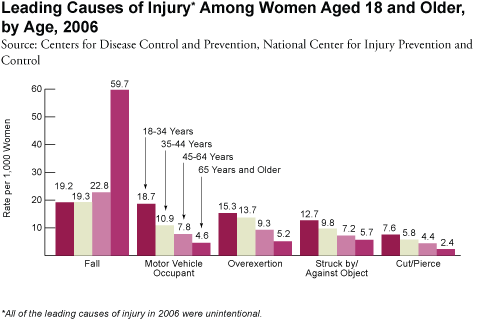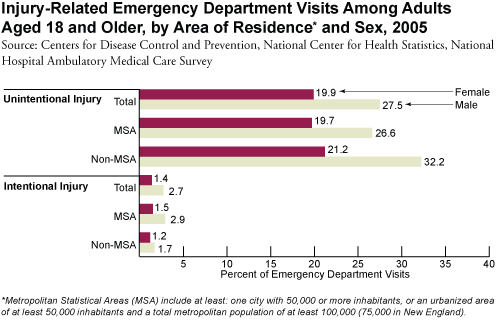AMERICAN.COM
A Magazine of Ideas
Wednesday, June 10, 2009
Filed under: Science & Technology, Culture, Public Square
In 2006 the National Academy of Sciences released Beyond Bias And Barriers: Fulfilling the Potential of Women in Academic Science and Engineering, which found “pervasive unexamined gender bias” against women in academic science. Donna Shalala, a former Clinton administration cabinet secretary, chaired the committee that wrote the report. When she spoke at a congressional hearing in October 2007, she warned that strong measures would be needed to improve the “hostile climate” women face in university science. This “crisis,” as she called it, “clearly calls for a transformation of academic institutions . . . Our nation’s future depends on it.”
While some scholars contend that ‘unconscious bias’ and persistent stereotypes are primary reasons for the paucity of women in the high echelons of math and science, others, perhaps a majority, suggest that men and women, on average, have different career interests and propensities.
The study was controversial from the beginning. John Tierney of the New York Times interviewed several researchers who dismissed it as politically driven propaganda—the “triumph of politics over science.” Linda Gottfredson of the University of Delaware said, “I am embarrassed that this female-dominated panel of scientists would ignore decades of scientific evidence to justify an already disproved conclusion, namely, that the sexes do not differ in career-relevant interests and abilities.”
This past Tuesday the National Academy of Sciences (NAS) released a non-political, objective study of women in academic science entitled Gender Difference at Critical Transitions in the Careers of Science, Engineering and Mathematics Faculty. The study was sponsored by the National Science Foundation (NSF) and mandated by Congress. It contradicts key findings of Beyond Bias and Barriers. According to its executive summary:
Our survey findings do indicate that, at many critical transition points in their academic careers (e.g., hiring for tenure-track and tenure positions and promotions) women appear to have fared as well as or better than men... These findings are in contrast to the COSEPUP [Shalala] committee’s general conclusions, that “women who are interested in science and engineering careers are lost at every educational transition” and the “evaluation criterion contain arbitrary and subjective components that disadvantage women.”
To give one typical finding, in the years studied, 2004 and 2005, women accounted for approximately 20 percent of applicants for positions in mathematics, but were 28 percent of those interviewed and 32 percent of those who received job offers. Furthermore, once women attained jobs in math or science programs, their teaching loads and research resources were comparable to men’s. Female full professors were paid, on average, 8 percent less than males. But the committee attributed this to the fact that the senior male professors had more years of experience. There were no differences in salaries for male and female assistant and associate professors. “I don’t think we would have anticipated that in so many areas that there would have been such a balance in opportunities for men and women,” said Dr. Sally Shaywitz, Yale University research scientist and co-chair of the committee that wrote the report.
The new study does not claim that women have achieved parity with men. It found, for example, that women with Ph.D.s in math and science are far less likely than men to pursue a career at a research-intensive university. Why should that be? The report does not say, but suggests it would be an important question to pursue. In fact, there is now a lively and growing literature on gender and vocation. While some scholars contend that “unconscious bias” and persistent stereotypes are primary reasons for the paucity of women in the high echelons of math and science, others, perhaps a majority, suggest that men and women, on average, have different career interests and propensities. (AEI Press will soon be publishing The Science on Women and Science, a collection of articles by scholars who argue different sides of this issue.)
The unfortunate news is that this objective new study has come after the Bias and Barriers report has already accomplished its purpose. Congress has authorized NSF to spend millions of dollars on anti-bias programs.
The unfortunate news is that this temperate, well-reasoned, and objective new NAS study has come after the Shalala/Bias and Barriers report has already accomplished its purpose. Many members of Congress from both parties (especially Republican Congressman Vernon Ehlers and Democratic Senators Ron Wyden and Barbara Boxer) were electrified by the Bias and Barriers report—as well as by the volumes of highly tendentious advocacy research that preceded it (see my “Why Can’t A Woman Be More Like a Man?”). Congress has already authorized NSF to spend millions of dollars on anti-bias programs, and instructed federal agencies such as NASA and the Department of Education to begin stringent Title IX gender equity reviews of science programs in the nation’s universities. These expensive and aggressive policies and programs were put in place without any genuine evidence that sexist bias against women in academic science is actually a problem.
Members of Congress who are concerned about gender equity should take a look at what is happening in the academy as a whole. University of Michigan economist Mark Perry, using Department of Education data, has prepared this useful chart:
Perry shows that men are now on the wrong side of the degree gap at every stage of education. Here are his figures for the class of 2009:
Associate’s degrees: 167 for women for every 100 for men.
Bachelor’s degrees: 142 for women for every 100 for men.
Master’s degrees: 159 for women for every 100 for men.
Professional degrees: 104 for women for every 100 for men.
Doctoral degrees: 107 for women for every 100 for men.
Degrees at all levels: 148 for women for every 100 for men.
Education Department projections though 2017 show a worsening picture for men with every passing year. If there is a crisis in the academy that merits a congressional investigation, it is not that women Ph.D.s are being shortchanged in math and science hiring and tenure committees, for that is not true. It is that men are quickly becoming the second sex in American education.
Christina Hoff Sommers is a resident scholar at the American Enterprise Institute.
Image by Darren Wamboldt/Bergman Group.
http://www.american.com/archive/2009/june/baseless-bias-and-the-new-second-sex/




No comments:
Post a Comment